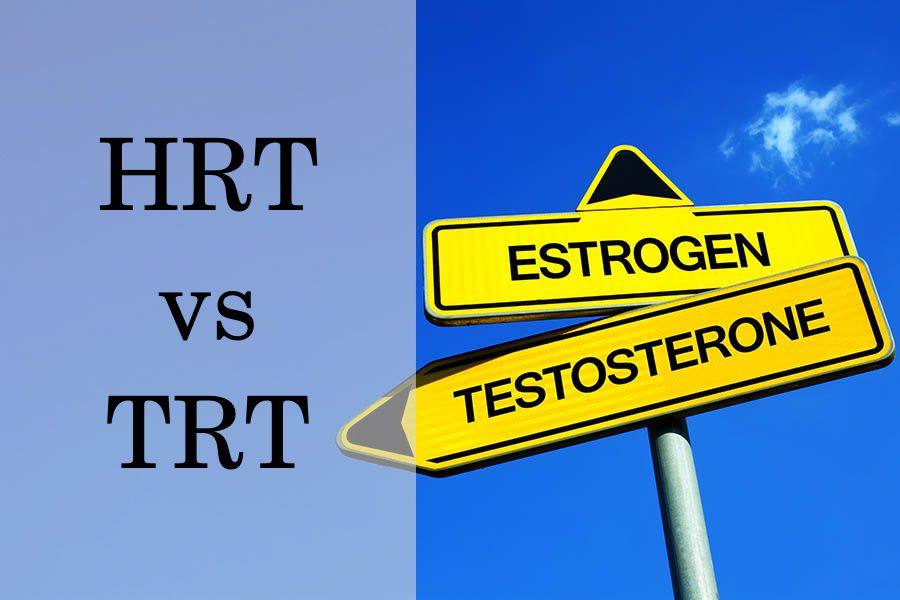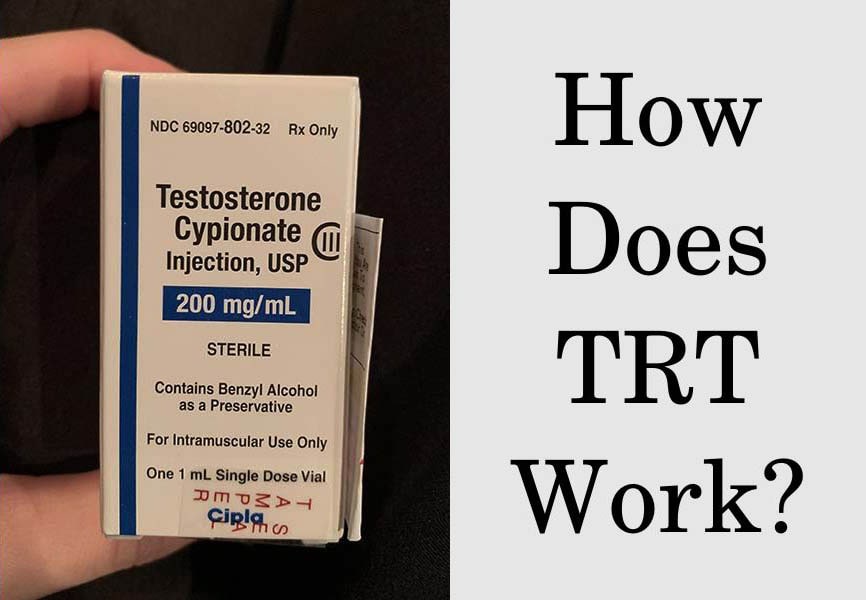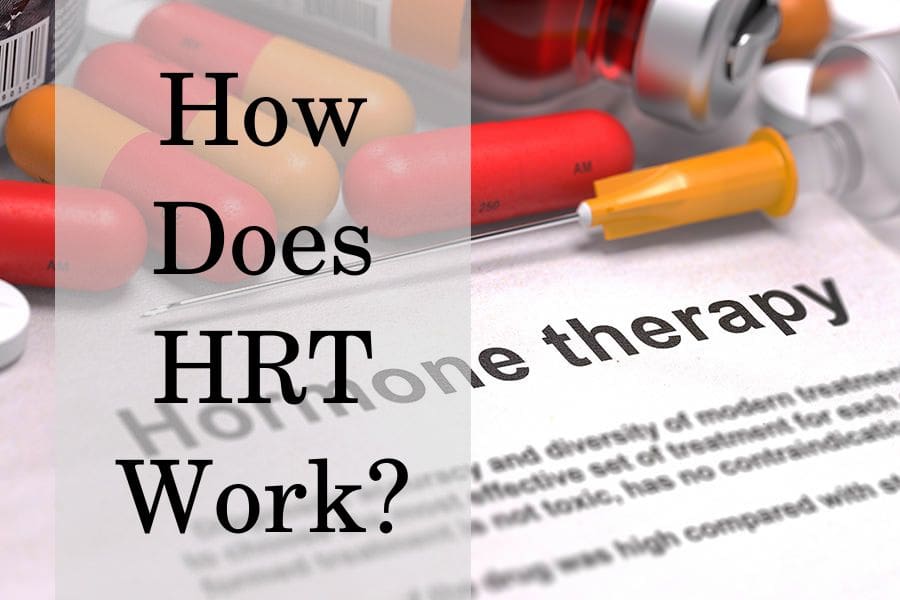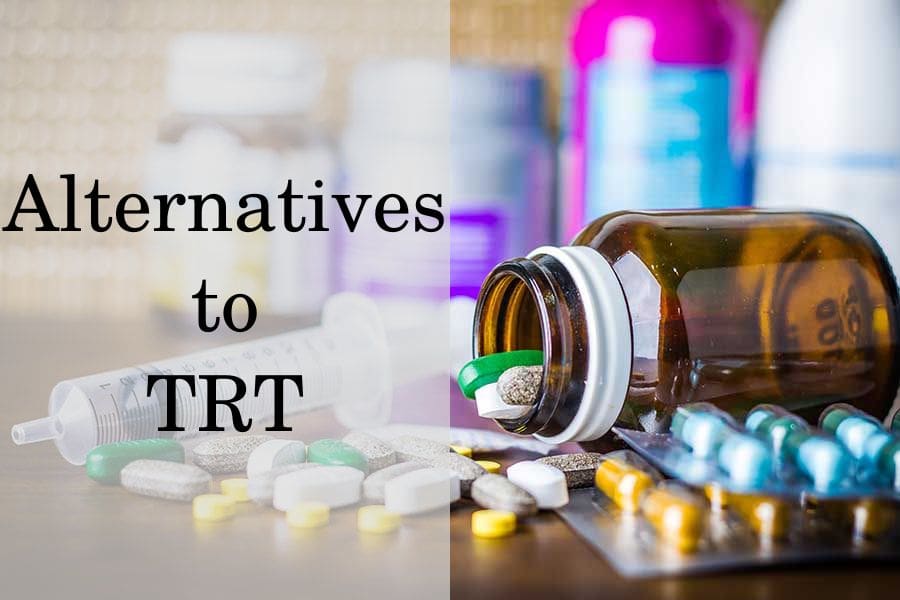Testosterone Replacement Therapy (TRT) and Hormone Replacement Therapy (HRT) are two of the most common hormonal treatments in the world.
Both TRT and HRT are prescribed with the goal of restoring hormonal balance or as a gender affirmation procedure, but they are catered to different demographics and health concerns.
HRT is typically prescribed to women to replenish diminishing levels of hormones like estrogen and progesterone. This helps mitigate menopausal symptoms such as hot flashes, mood swings, and bone loss.
On the other hand, TRT is a form of hormone therapy that involves the administration of the male sex hormone testosterone (T).
It is primarily prescribed for men, aiming to counteract the symptoms of low serum testosterone levels, such as muscle loss, fat gain, depression, fatigue, and sexual dysfunction.
Therefore, despite the difference between TRT and HRT, both therapies are aimed at improving the overall quality of life of the respective patients.
What is TRT?
TRT is the administration of exogenous testosterone under the guidance of a medical specialist with the aim to increase or restore serum T levels.
Similar to the naturally-occurring hormone, exogenous testosterone exerts anabolic and androgenic effects on the human body by activating the androgen receptors.
As a result, testosterone therapy can help manage almost all the symptoms of low T in men, including muscle wasting, increased body fat, low energy levels, erectile dysfunction, bone loss, and depressed mood.
Testosterone replacement therapy may also help improve serious concerns related to testosterone deficiency in men, such as metabolic problems and increased cardiovascular risk. Currently, the only symptom of low T which cannot be effectively managed by therapy is infertility.
The goal of TRT in men with low testosterone levels (below 300 ng/dl) is to bring total testosterone levels to the middle tertile of the normal reference range.
In addition, the masculinizing effects of the hormone can be used for inducing puberty in male children or for gender affirmation procedures in adults.
While TRT is primarily used in men, it also has off-label applications. It plays a crucial role in masculinization for female-to-male (FtM) transgender healthcare. It can also be used in postmenopausal women suffering from low libido due to hypoactive sexual desire disorder (HSDD).
It’s important to note that testosterone replacement therapy is not the same as taking anabolic steroids, which are often used illegally for performance enhancement. As mentioned, TRT is a legal and medically supervised treatment, typically indicated for conditions related to low T levels, such as hypogonadism
According to the available research, TRT can provide numerous benefits in men with hypogonadism and low T:
- improved mood
- increased energy levels
- enhanced sexual function
- higher bone density
- increased muscle mass
- fat loss
Furthermore, TRT can be tailored to individual symptoms and sensitivity, making it a versatile treatment option.
For instance, the dosage and administration method can be adjusted to manage symptoms effectively while at the same time minimizing the risk of undesired adverse reactions.
As a result, testosterone replacement therapy can help improve the quality of life in men but also facilitate gender affirmation in FtM patients in a safe, controlled manner.
What is HRT?
HRT is a therapy that uses female sex hormones (estrogens and progestogens). It’s often indicated for hormonal imbalances associated with menopause. HRT can also be used for gender affirmation in male-to-female transgender individuals (MtF).
The therapy can be used in women experiencing severe menopausal symptoms such as due to naturally occurring or surgically induced menopause, which may include:
- hot flashes
- night sweats
- mood swings
- vaginal dryness
Estrogen therapy may also improve skin health and vitality, which can provide benefits for patients’ appearance. More specifically, it may prevent the decrease in skin collagen in postmenopausal women and therefore help maintain skin thickness.
Since hormone replacement therapy is primarily used to alleviate menopausal symptoms, it’s often initiated around the onset of menopause, typically between ages 45-55.
However, the appropriate age to start HRT depends on the individual. For example, it may be necessary to initiate it at a much earlier age in the case of surgically induced menopause.
Further, the decision to use HRT is highly individual and should be made in consultation with a healthcare provider, considering the severity of symptoms, personal health history, and the balance of benefits and risks.
However, for women who are past menopause and no longer experiencing its symptoms, hormone replacement therapy may not be recommended. In these cases, the potential risks, such as cancer or blood clots, may outweigh the benefits.
Nevertheless, titrating the dosage and monitoring for side effects is imperative regardless of the patient’s age and indications in order to maximize the success and safety of HRT.
Effects and risks of HRT also depend on the specific type of medication used, which may include estrogen-only or combined therapy (estrogens + progestogens/progestins).
Estrogen-only HRT is primarily used in women who have had a hysterectomy, as it can increase the risk of endometrial cancer in women who still have a uterus. The addition of progesterone (or other progestogens/progestins) reduces this risk.
7 main differences between HRT and TRT
Below we will break down the key differences between HRT and TRT in terms of legality, safety, benefits, and more.
Effects
TRT works by increasing serum T levels, which activates the androgen receptors within the body and leads to anabolic and androgenic (masculinizing) effects. Testosterone replacement therapy can lead to:
- Improved muscle size and strength
- Higher metabolic rate and body fat reduction
- Increased sebum production
- Increased body and facial hair growth
- Clitoromegaly in women
- Deepening of the voice
- Increased libido
- Stimulated bone mineral density
HRT’s benefits are primarily due to the presence of estrogen, while progestogens such as progesterone or progestins can be added to lower the risk of some side effects. Here are the main effects of hormone replacement therapy:
- Effective treatment for vasomotor symptoms (hot flushes and night sweats)
- Can reduce vaginal dryness and urethritis
- Halts or slows bone loss, probably for as long as it is continued
- Some studies suggest that women who take estrogen preserve or improve cognitive function
- Estrogen increases the risk of endometrial cancer, but the data suggests that several days of a progestogen/progestin alongside the estrogen, repeated every month, appears to be highly protective.
Types
FDA-approved TRT is available only as synthetic testosterone formulations, called testosterone esters, which provide enhanced pharmacokinetics compared to bioidentical formulations.
On the other hand, the FDA has approved both synthetic and native formulations for use in HRT. For example, synthetic options include various formulations, including synthetic conjugated estrogens and progestins.
FDA has approved a few formulations of natural estradiol and progesterone, which have shown comparable effectiveness and safety in phase-3 clinical trials.
Forms
TRT is primarily used in the form of testosterone injections, but it is also available as testosterone pills, patches, gels, creams, and pellets. TRT is also available as a nasal spray.
HRT is primarily used as an oral formulation. It is also available as transdermal and intravaginal formulations, as well as injections.
Legality
TRT is a prescription-only medication and a controlled substance classified in schedule-III due to the potential risk for psychological addiction and abuse. Thus, testosterone formulations are strictly regulated in the US by the Controlled Substances Act (CSA). Possession or use without a prescription is subject to legal prosecution.
On the other hand, HRT does not involve the use of controlled substances during therapy, although all HRT medications are prescription-only.
Population
TRT is primarily used by men who have low testosterone levels due to conditions like hypogonadism. It is also used in FtM transgender individuals as part of their transition.
In contrast, HRT is mainly used by women who are experiencing symptoms of menopause. It can also be used in MtF transgender individuals as part of their transition.
Usage
The frequency of TRT or HRT usage depends on the specific formulation and the individual’s condition. For example, some forms of testosterone replacement therapy may be administered via injection every several weeks (1-12 weeks) or as implants that are inserted every 3-6 months. Only, TRT pills and topical gels/patches are applied daily.
On the other hand, HRT medications are taken daily, usually in pill form, applied as a patch or gel, or inserted as a vaginal ring. Some forms of HRT are taken continuously, while others are taken cyclically (for example, for three weeks out of every month).
Safety
TRT can increase the risk of certain conditions such as acne, oily skin, elevated red blood cells, or breast enlargement and may speed up tumor growth in men with prostate cancer. In addition, testosterone replacement therapy may worsen pre-existing sleep apnea or prostate hyperplasia.
HRT, particularly when it includes a combination of estrogen and progestin, can increase the risk of conditions such as blood clots, stroke, and breast cancer. As mentioned, estrogen-only HRT can increase the risk of endometrial malignancies.
Do they have anything in common?
Despite the fact that TRT is also a type of hormone-replacement therapy, HRT and TRT are not the same thing. As mentioned HRT is a term used to indicate therapy involving female sex hormones while TRT is done by administering the male sex hormone testosterone.
Nevertheless, there are numerous similarities between HRT and TRT. For example, both therapies involve the administration of compounds with the aim of restoring hormone levels to a normal range and alleviating symptoms associated with hormonal disbalances.
Studies report that HRT and TRT can also be used in combination in certain cases, such as menopausal women with HSDD. In these patients, TRT and HRT can exert synergistic effects and significantly improve libido compared to estrogen or testosterone treatment alone.
On the other hand, hormone replacement therapy should not be applied in men unless the primary aim is MtF gender affirmation. HRT in men can lead to testicular atrophy, infertility, and gynecomastia, amongst other adverse effects.
TRT in men can also lead to some increase in estrogen levels. That’s due to the fact that testosterone can get transformed into estrogen by the aromatase enzyme which is naturally found in adipose tissue. Yet, the increase in estrogen levels is usually within the healthy range as long as TRT is dosed properly.
Is HRT an alternative to TRT?
HRT is not an alternative to TRT as both therapies have vastly different medical indications. Only in specific cases, such as HSDD, HRT may be used in place of the commonly prescribed (off-label) low-dose TRT.
In addition, there are natural options and dietary supplements available, which are often purported as effective alternatives for either TRT or HRT. Notable examples include DHEA, phytoestrogens, and testosterone boosters.
DHEA (dehydroepiandrosterone) is a hormone naturally produced by the adrenal glands. It can be transformed in the human body into other sex hormones such as testosterone and estrogens. It can also affect the body directly as it can weakly stimulate androgen and estrogen receptors.
However, clinical trials reveal that supplementation has limited effectiveness for menopausal women and hypogonadal men.
- In women, one review compiled 63 studies investigating DHEA supplementation in women and suggests it may have some benefits for hip bone mineral density and hot flashes. However, there were no benefits for other menopausal symptoms, effects on mood, metabolic and sexual health were mixed. Some women may experience increased facial hair and acne due to the concomitant rise in T levels.
- In men, DHEA has been reported to induce a small increase in testosterone levels in healthy individuals. However, the available trials do not report any effect of DHEA on muscle mass, fat loss, or sexual function in healthy men. Further, it has not been tested in men with low T or compared to any other treatment, such as TRT in hypogonadal males.
Phytoestrogen supplementation is often purported as a natural alternative to HRT for the treatment of menopause-related conditions due to phytoestrogens’ weak affinity for estrogen receptors.
Studies reveal that while phytoestrogens may reduce vasomotor symptoms of menopause and improve bone mineral density and markers of cardiovascular risk, the effects are likely small and slow in onset, and the evidence is heterogeneous and inconclusive. Overall, their use appears to be safe.
On the other hand, testosterone boosters are often marketed as effective options for improving T levels in men. However, the majority of their ingredients have been tested in healthy men only, and the results are rather mixed.
In fact, a meta-analysis reports that the majority of ingredients in testosterone boosters lack any scientific support for their purported T-boosting effects. Moreover, about 10% of the ingredients appeared to hold potential harm rather than benefit for T levels of healthy men.
Even if testosterone supplements had a hypothetical benefit for T synthesis in healthy men, they would still be ineffective in males with low T due to hypogonadism, as these patients often have testicular damage or other endocrine dysfunction, rendering the glands unresponsive to stimulus.
Patients with low T should be aware that untreated hormonal deficiencies can increase the risk of serious conditions like osteoporosis and heart disease. Therefore, delaying FDA-approved medical therapies like HRT and TRT to try alternative treatments could amplify these health risks.
Get a free consultation with our medical expert for any questions about hormone replacement therapy




